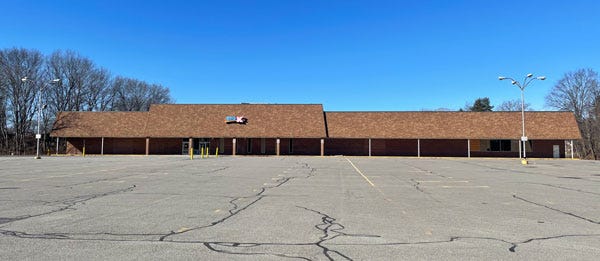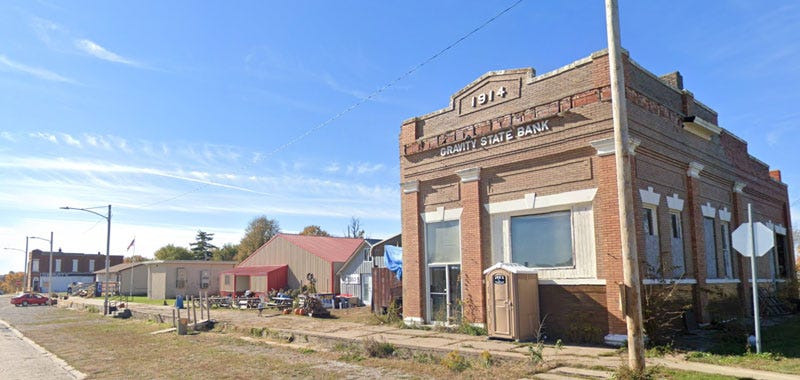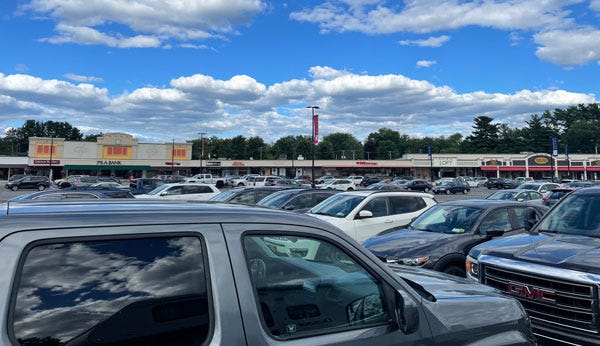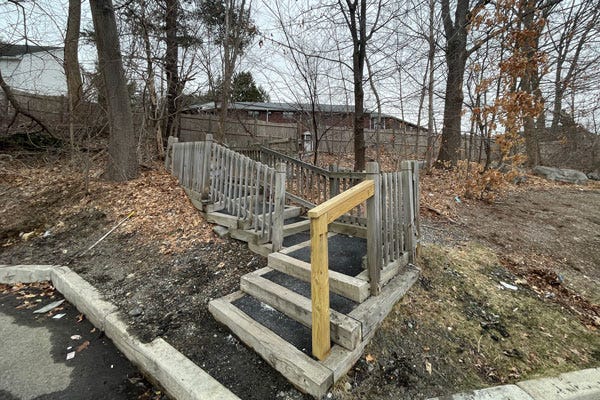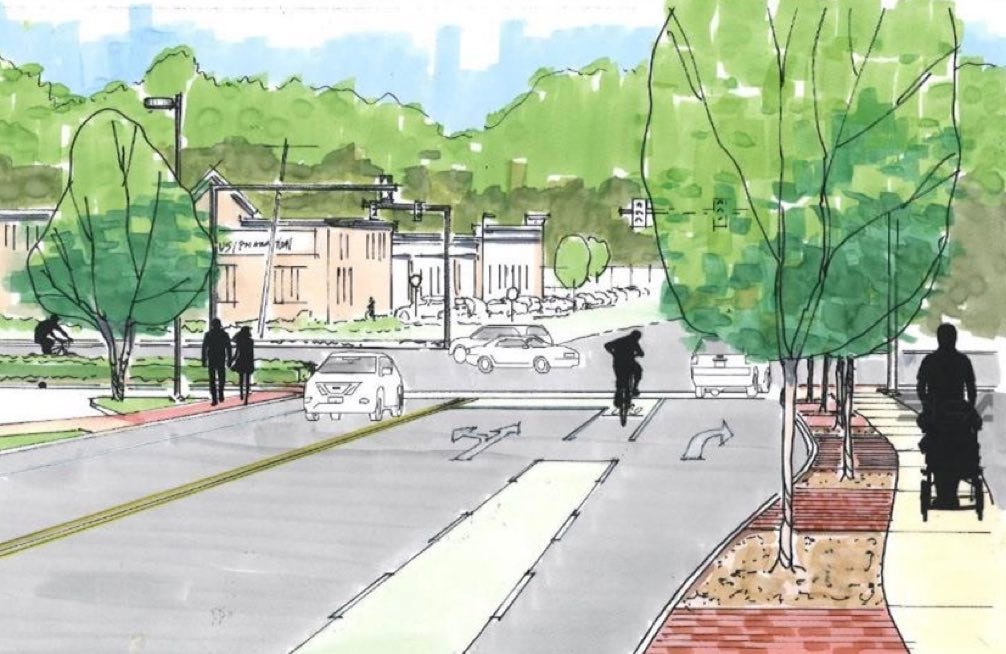We Are Nature, We Are Traffic
And why the suburbs have such a hard time absorbing any new housing or other developments
Welcome to another edition of Willoughby Hills!
This newsletter explores topics like history, culture, work, urbanism, transportation, travel, agriculture, self-sufficiency, and more.
If you like what you’re reading, you can sign up for a free subscription to have this newsletter delivered to your inbox every Wednesday and Sunday and get my latest podcast episodes:
Addison Del Mastro published an interesting piece in
last week about how residents in Virginia Beach are fighting the redevelopment of a half-vacant strip mall. The plaza once contained a large supermarket which is now vacant and a K-mart, at least part of which is now occupied by Planet Fitness. Developers are proposing razing some of the shopping center and adding new apartments to the site.In his piece, Del Mastro quotes this passage from a news report, which shows why some locals oppose the project:
“[Area resident Drew] Little, who visits KempsRiver Crossing often, said he and his neighbors would like to see the quiet shopping center bustling again. He said that first, they want city leaders to address traffic at the intersection.
‘Anything that creates more traffic here won’t work unless we address the traffic we already have,’ he said.”
Del Mastro goes on to add his commentary, which includes:
“But traffic is bad, and the traffic has to get fixed first. How? By spreading development further out and forcing every errand to involve a car trip?
It’s a self-reinforcing problem: in order to dilute traffic, we dilute development, which intensifies traffic, which intensifies the desire to dilute development. Rinse, repeat: suburbia.”
He touches on a number of issues here that I wanted to explore a little more today. But before we dive into it, I want to share a Wendell Berry quote from The Unsettling of America that has nothing to do with traffic or apartments but still immediately came to mind:
“The concept of country, homeland, dwelling place becomes simplified as ‘the environment’- that is, what surrounds us, we have already made a profound division between it and ourselves. We have given up the understanding- dropped it out of our language and so out of our thought- that we and our country create one another, depend on one another, are literally part of one another; that our land passes in and out of our bodies just as our bodies pass in and out of our land; that as we and our land are part of one another, so all who are living as neighbors here, human and plant and animal, are part of one another, and so cannot possibly flourish alone; that, therefore, our culture must be our response to our place, our culture and our place are images of each other and inseparable from each other, and so neither can be better than they other.”
To simplify Berry’s point a bit, when we define “nature,” we tend to think of it as a place we go that is separate from our daily lives- a farm, a lake, a beach, or a national park. But all of the things in our everyday world, and indeed our very selves, are a part of nature too and cannot be extracted or separated from that.
So too with traffic. We describe “getting stuck” in traffic. We do our best to “avoid” traffic. Traffic is always seen as somebody or something else. It’s all of those other cars.
We don’t see that when we are sitting in our car, we too are traffic. We too are part of the problem. We too are clogging up the road for everyone around us.

If you live in the suburbs (like I do), your built environment has been designed to accommodate the car. And usually only the car.
Think how many times per day you are forced to take a car trip to go about your business. Dropping the kids off at school, music lessons, or a sports game requires a car. Buying groceries requires a car. Mailing a letter? Car. Picking up dinner? Either driving your car to the restaurant or having a delivery driver drive to you. In some neighborhoods, it’s even difficult to walk a dog on the street so we drive our car to dog parks for exercise.
In that context, it makes sense why residents would resist the arrival of more housing. More housing doesn’t just mean more people. In the suburbs, more housing means more cars, which means more traffic.
When I read Del Mastro’s piece about an old K-Mart being developed into apartments, it felt like a small-scale version something that happened in Boston’s Downtown Crossing, an area about which I’ve written before and even toured in a video for members.
In that neighborhood, the former Filene’s department store was partially demolished to make way for a 60 story glass skyscraper called Millennium Tower, which houses, among other things, more than 400 apartments.
I’m sure there were people that opposed the construction of this tower on aesthetic grounds or concerns that it might alter the “character” of the neighborhood, but I don’t imagine people spoke out about the traffic that Millennium Tower generated.
The net effect of adding 400 apartments to a busy urban neighborhood like Downtown Crossing was negligible simply because most trips for those apartment dwellers do not require a car.
There’s a grocery store within the same complex. There’s a Macy’s, TJ Maxx, and Marshall’s within a one block radius for clothing. There are CVS and Walgreens stores nearby for medicine and personal care products. And the building is a few blocks from the Theatre District, so entertainment and dining are right there. It’s all walkable.
Of course the people living in Millennium Tower or any other city apartment aren't stuck in their one neighborhood. If they need to travel further afield, they have lots of options. They can ride a bike, take public transit, hire a taxi or Lyft, or they can drive their own car if they want.
The point is, within a city having options cuts down on car travel, thus cutting down on traffic. People can be crammed at a very high density without concerns about overcrowding because the streets can absorb new residents. Cars need not be fully eliminated, but if at least some daily necessities can be tended to within walking distance, the number of total car trips drops dramatically.
In the suburbs, the solution is not to oppose all new housing. Instead, new housing should be thoughtfully designed to integrate with all that surrounds it. Sidewalks should be wide enough for pedestrians, wheelchairs, and strollers, thoughtfully connected to business areas, and maintained in all weather. Biking can be made accessible with bike paths and designated bike lanes separate from vehicular traffic.
Housing, whether single family homes or apartments, should not be developed as individual islands, but rather should connect in some way to shopping, schools, and other businesses. Doing this may not reduce every car trip, but it will eliminate some, and that’s a good starting place.
It can often seem like living within walking distance of amenities is a city luxury, but it’s also the way we built small towns in America until about the mid 20th century.
A few months ago, I profiled Gravity, Iowa, a place that is now a virtual ghost town. At its peak, Gravity had less than 900 residents, yet here’s how Charles Ambrose, the mayor of Gravity described his childhood in the 1950s:
“I could tell you from when I started to grade school in town, there was two grocery stores, a hardware store, a barbershop, three filling stations, a big lumberyard, two restaurants, a hardware store, and all that's gone… From the town, you could walk anywhere to the main street. You're talking about a five to six block walk, at the most.”
Of course, we don’t think of our towns and cities that way anymore. We allow large corporations to develop strip malls at the periphery of town. We build housing developments with no sidewalks and no connection to adjacent housing developments. We surround everything with acres of asphalt and allow cars to barrel through our neighborhoods.
Disconnectedness is so rampant in the suburbs that even something as small as a staircase that connects an apartment complex to an adjacent shopping center can make me giddy. I spotted this one the other day at a shopping center in Acton, MA which contains a supermarket, a TJ Maxx, and a few other small stores.
The plaza is surrounded by apartments, yet they feel like completely separate entities, save for this one staircase that breaks through the fence, makes the large hill navigable, and makes grocery shopping a walkable task for residents. I’m not sure who built and maintains the stairs, but they are there and they seem to get some use.
But this staircase isn’t the only progress in this neighborhood. A multi-year construction project is underway to completely update the streets and sidewalks in front of this plaza and at surrounding businesses, which sit at a busy intersection just off of a major highway.
Once finished, the area will have updated wide sidewalks on both sides of the street, crosswalks, bike lanes, and additional stop lights to slow traffic. The plan may not be perfect, but it’s a major step in the right direction, especially considering that it’s a retrofit of existing roadways that were not built with pedestrians or bikers in mind. These plans are a good stating place which other cities and towns should be looking to emulate.
After all, since we are all traffic, and thus a part of the problem, perhaps we can start to be a part of the solution too.
Related Reading
If you’ve missed past issues of this newsletter, they are available to read here.
If you enjoyed this issue, please share forward it to a friend or share it on social media:
Stay Safe!
Heath





